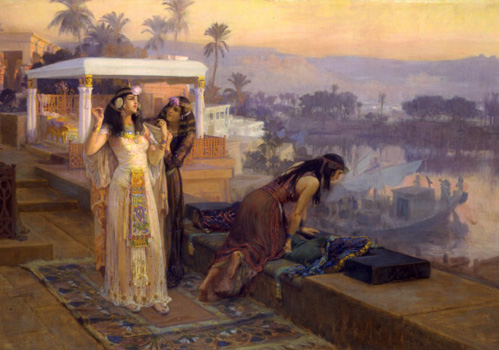April 2013
Frederick Arthur Bridgman, American, 1847-1928
Cleopatra on the Terraces of Philae, 1896
Oil on canvas, 29 7/8 x 35 1/2 in.
Signed and dated lower right: F. A. Bridgman / 1896
1999.5

Frederick Bridgman, born in Alabama, worked as an engraver, and trained at the National Academy of Design in New York, before receiving a scholarship in 1866 to study with Jean-Léon Gérôme in Paris at the École des Beaux-Arts. Bridgman’s first encounter with the Orient was in 1872-74 during two extended trips to North Africa and the Middle East, visiting Morocco, Algeria, Tunisia, and Egypt. He subsequently focused on Orientalist subjects for his paintings and filled his two Paris studios with countless objects brought back from his travels. John Singer Sargent is said to have declared Bridgman’s studio to be one of the two things a visitor to Paris must see, the Eiffel Tower being the other.
While Bridgman specialized in scenes from daily in North Africa — especially its women — he painted several imaginary historical scenes set in ancient Egypt such as Cleopatra on the Terraces of Philae. Here, Cleopatra prepares her departure by boat from the picturesque island of Philae, now best known for its temple complex, including the Kiosk of Trajan here depicted in the far left background, but not actually built until a century after Cleopatra. After being shown at the 1896 Paris Salon, the painting was exhibited at the National Academy of Design in New York the following year. William Randolph Hearst acquired the painting, and for years it hung in his San Simeon castle on the California coast.


